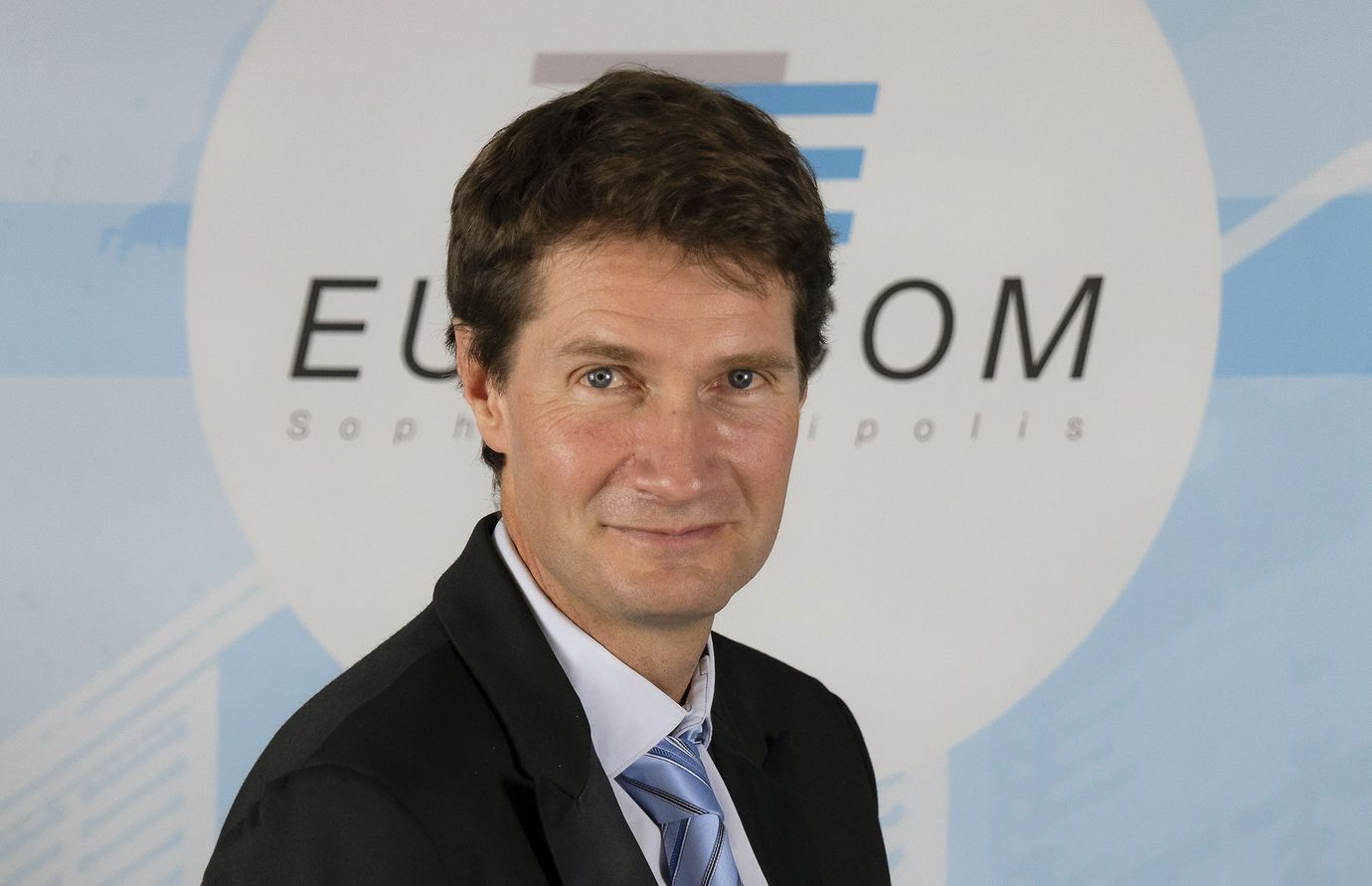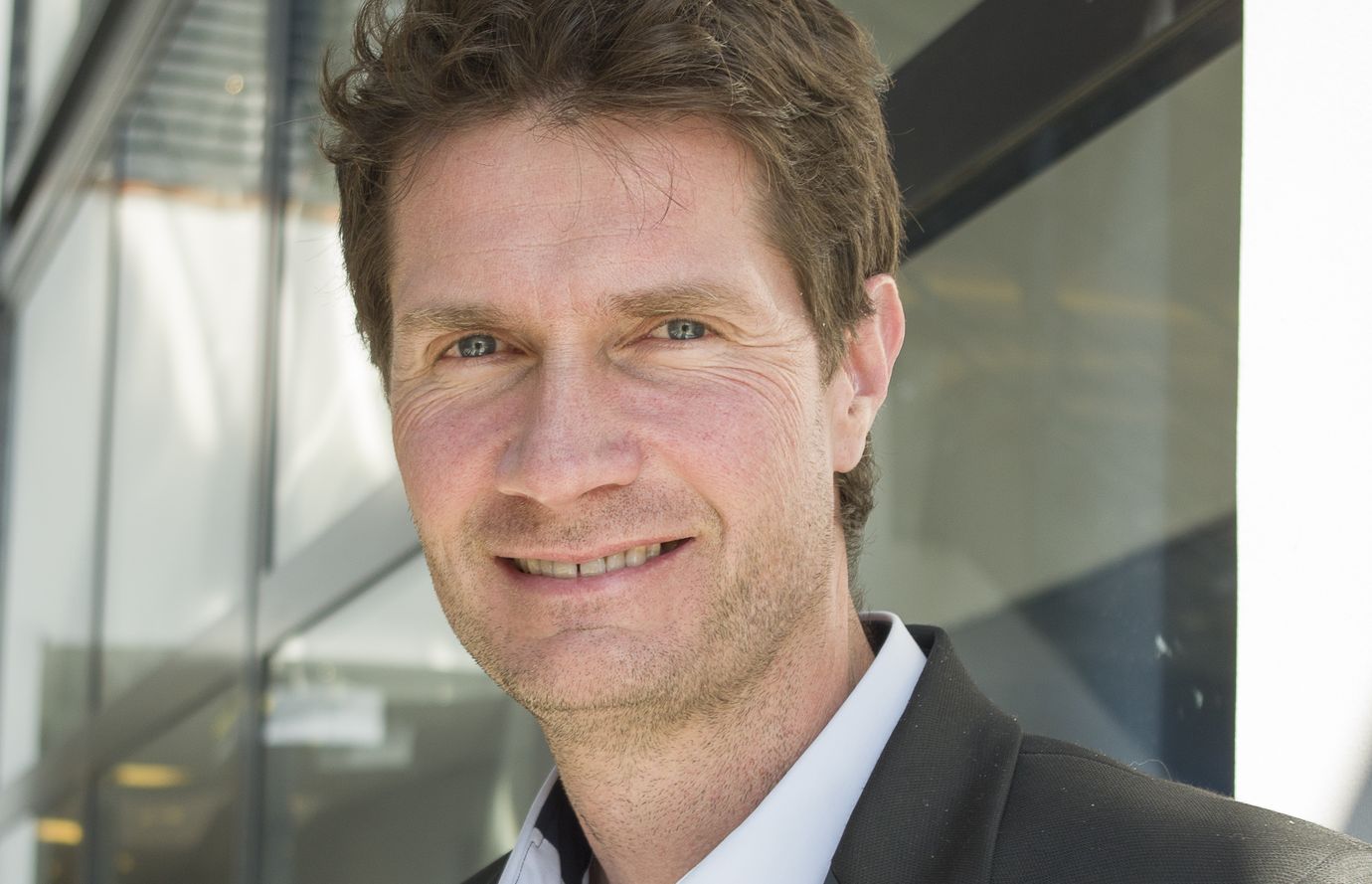David Gesbert, winner of the 2021 IMT-Académie des Sciences Grand Prix
EURECOM researcher David Gesbert is one of the pioneers of Multiple-Input Multiple-Output (MIMO) technology, used nowadays in many wireless communication systems. He contributed to the boom in WiFi, 3G, 4G and 5G technology, and is now exploring what could be the 6G of the future. In recognition of his body of work, Gesbert has received the IMT-Académie des Sciences Grand Prix.
“I’ve always been interested by research in the field of telecommunications. I was fascinated by the fact that mathematical models could be converted into algorithms used to make everyday objects work,” declares David Gesbert, researcher and specialist in wireless telecommunications systems at EURECOM. Since he completed his studies in 1997, Gesbert has been working on MIMO, a telecommunications system that was created in the 1990s. This technology makes it possible to transfer data streams at high speeds, using multiple transmitters and receivers (such as telephones) in conjunction. Instead of using a single channel to send information, a transmitter can use multiple spatial streams at the same time. Data is therefore transferred more quickly to the receiver. This spatialized system represents a breaking point with previous modes of telecommunication, like the Global System for Mobile Communications (GSM).
It has proven to be an important innovation, as MIMO is now broadly used in WiFi systems and several generations of mobile telephone networks, such as 4G and 5G. After receiving his PhD from École Nationale Supérieure des Télécommunications in 1997, Gesbert completed two years of postdoctoral research at Stanford University. He joined the telecommunications laboratory directed by Professor Emeritus Arogyaswami Paulraj, an engineer who worked on the creation of MIMO. In the early 2000s, the two scientists, accompanied by two students, launched the start-up Iospan Wireless. This was where they developed the first high-speed wireless modem using MIMO-OFDM technology.
OFDM: Orthogonal Frequency-Division Multiplexing
OFDM is a process that improves communication quality by dividing a high-debit data stream into many low-debit data streams. By combining this mechanism with MIMO, it is possible to transfer data at high speeds while making the information generated by MIMO more robust against radio distortion. “These features make it great for use in deploying telecommunications systems like 4G or 5G,” adds the researcher.
In 2001, Gesbert moved to Norway, where he taught for two years as adjunct professor in the IT department at the University of Oslo. One year later, he published an article in which he described that complex propagation environments favor the functioning of MIMO. “This means that the more obstacles there are in a place, the more the waves generated by the antennas are reflected. The waves therefore travel different paths and interference is reduced, which leads to more efficient data transfer. In this way, an urban environment in which there are many buildings, cars, and other objects will be more favorable to MIMO than a deserted area,” explains the telecommunications expert.
In 2003, he joined EURECOM, where he became a professor and five years later, head of the Mobile Communications department. There, he has continued his work aiming to improve MIMO. His research has shown him that base stations — also known as relay antennas — could be useful to improve the performance of this mechanism. By using antennas from multiple relay stations far apart from each other, it would be possible to make them work together and produce a giant MIMO system. This would help to eliminate interference problems and optimize the circulation of data streams. Research is still being performed at present to make this mechanism usable.
MIMO and robots
In 2015, Gesbert obtained an ERC Advanced Grant for his PERFUME project. The initiative, which takes its name from high PERfomance FUture Mobile nEtworking, is based on the observation that “the number of receivers used by humans and machines is currently rising. Over the next few years, these receivers will be increasingly connected to the network,” emphasizes the researcher. The aim of PERFUME is to exploit the information resources of receivers so that they work in cooperation, to improve their performance. The MIMO principle is at the heart of this project: spatializing information and using multiple channels to transmit data. To achieve this objective, Gesbert and his team developed base stations attached to drones. These prototypes use artificial intelligence systems to communicate between one another, in order to determine which bandwidth to use or where to place themselves to give a user optimal network access. Relay drones can also be used to extend radio range. This could be useful, for example, if someone is lost on a mountain, far from relay antennas, or in areas where a natural disaster has occurred and the network infrastructure has been destroyed.
As part of this project, the EURECOM professor and his team have performed research into decision-making algorithms. This has led them to develop artificial neuron networks to improve decision-making processes performed by the receivers or base stations desired to cooperate together. With these neuron networks, the devices are capable of quantifying and exploiting the information held by each of them. According to Gesbert, “this will allow receivers or stations with more information to correct flaws in receivers with less. This idea is a key takeaway from the PERFUME project, which finished at the end of 2020. It indicates that to cooperate, agents like radio receivers or relay stations make decisions based on sound data, which sometimes has to be rejected to let themselves be guided by decisions from agents with access to better information than them. It is a surprising result, and a little counterintuitive.”
Towards the 6th generation of mobile telecommunications technology
“Nowadays, two major areas are being studied concerning the development of 6G,” announces Gesbert. The first relates to ways of making networks more energy efficient by reducing the number of times that transmissions take place, by restricting the amount of radio waves emitted and reducing interference. One solution to achieve these objectives is to use artificial intelligence. “This would make it possible to optimize resource allocation and use radio waves in the best way possible,” adds the expert.
The second concerns applications of radio waves for purposes other than communicating information. One possible use for the waves would be to produce images. Given that when a wave is transmitted, it reflects off a large number of obstacles, artificial intelligence could analyze its trajectory to identify the position of obstacles and establish a map of the receiver’s physical environment. This could, for example, help self-driving cars determine their environment in a more detailed way. With 5G, the target precision for locating a position is around a meter, but 6G could make it possible to establish centimeter-level precision, which is why these radio imaging techniques could be useful. While this 6th-generation mobile telecommunications network will have to tackle new challenges, such as the energy economy and high-accuracy positioning, it seems clear that communication spatialization and MIMO will continue to play a fundamental role.
Rémy Fauvel



